The gout diet is based on minimizing the purine content in the diet, which helps to reduce the level of uric acid in the body and normalize the metabolism. The basis of the diet is composed of vegetables, fruits, berries, grains, and dairy products. The amount of meat and other protein foods should be restricted. Diet is considered a mandatory part of treatment, because without it, the drug is ineffective.
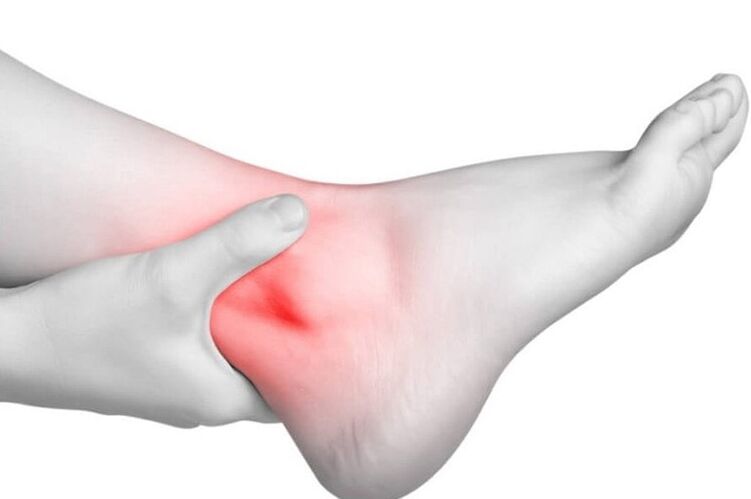
Benefits of the gout diet
Benefits of nutritional therapy:
- A comprehensive diet with high enough calories to prevent you from feeling hungry;
- Get rid of harmful foods containing oxalic acid and purines, reduce the severity of gout symptoms, relieve pain and swelling;
- Adhering to the diet can reduce the risk of recurrence and deterioration;
- A healthy diet that restricts spicy, fatty and fried foods can improve overall health and physical condition;
- The right choice of food can reduce the risk of complications, including renal failure, atherosclerosis, and the formation of visceral gout nodes;
- Weight loss meals are easy to prepare and do not require expensive ingredients.
Dieting can help lower uric acid levels and slow or stop the onset of gout.
Proper nutrition without accompanying treatment can not completely cure a person, but it can be used as a necessary help to combat pathology and relieve the patient's pain symptoms.
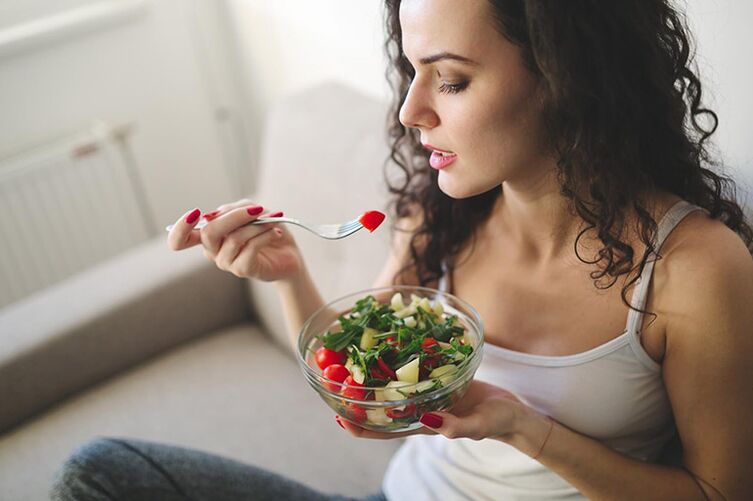
The basic principles of nutrition for gout and hyperuric acid
The goal of the diet is to limit the intake of purines and intermediate products that increase their concentration. When preparing a diet, please observe the following rules:
- The food eaten every day is divided into 5 meals regularly. Therefore, they can reduce the burden on the digestive system and kidneys while maintaining a good metabolism.
- The chemical composition of food is strictly controlled. This helps prevent salt deposits in the tissues and helps get rid of stones and tophi.
- The total calories of the diet is reduced to 2700 kcal per day, and the total food weight does not exceed 3 kg. This allows you to maintain a normal weight, because obesity can exacerbate gout.
- The amount of protein is limited to 80 grams per day. Animal-derived proteins are trying to be replaced by plant-based proteins, but they cannot be completely ruled out.
- The daily fat ratio is 80-90 grams. About 25% of vegetable oil enters the human body, and the rest-in the composition of the dishes.
- Patients consume standard amounts of carbohydrates-400-450 grams per day. They enter the body together with grains, dried fruits, and nuts.
- To neutralize excess acid, the menu includes many alkaline products: vegetables, milk and fermented dairy products, fresh fruits and berries. They will help the body maintain material balance.
- All meats in the diet dishes are pre-boiled for 15 minutes, and then the first broth is drained. It helps to get rid of excess purines in muscle tissue.
- The fluid intake increased to 2-2. 5 liters per day. The diet includes healthy drinks with diuretic effects and alkaline drinks: fruit juice and berry juice, herbal tea and decoction, milk, mineral water.
- The amount of salt is limited to 8-10 grams per day. Overdose will promote the formation of deposits and reduce the rate of urine excretion, thereby aggravating the symptoms of gout.
- Alcoholic beverages are excluded from the diet. Even infrequent use of them can disrupt kidney function and increase the risk of worsening the condition.
- If necessary, vitamin and mineral complexes are added to the diet. Vitamin B2, C, PP, and potassium must be maintained at the required levels. These vitamins have a diuretic effect.
- Fasting days are held once a week, during which patients only eat fruits, vegetables and grains with low purine content.
If a doctor prescribes, the diet must be combined with a certain dose of supportive medication. Since there is no cure for gout, a person must abide by the rules of nutrition throughout his life.
What can you eat
The following foods are allowed in the diet:
- Uncomfortable bakery products, including black bread and white bread.
- Vegetables: dill, corn, beets, onions, garlic, potatoes, carrots, cabbage, broccoli, cucumber, zucchini, eggplant, pumpkin. Limited quantity: tomatoes, radishes, broccoli, radishes, asparagus, rhubarb, celery, peppers, onion feathers, parsley.
- All fruits and berries except grapes, cranberries, figs and raspberries. Consumption of plums is limited.
- Lean meat: rabbit meat, chicken, turkey. Eat no more than 3-5 times a week, and the serving size should not exceed 170 grams.
- Low-fat fish (salmon, salmon, trout), seafood: mussels, shrimp, crab and crayfish, squid, octopus.
- Eggs-not more than 1. every day.
- Dairy products: Kefir, cottage cheese, sour cream, yogurt, cream, unsalted cheese, low-fat whole milk (preferably diluted). Butter can be added to cereals and stews, but it cannot be used for frying or eaten in pure form.
- All cereals and cereals, except beans: rice, buckwheat, millet, oats, etc. It is best to boil it with water or diluted milk.
- A soup based on light vegetable soup and potatoes.
- Pumpkin, sunflower, flax, sesame.
- Walnuts, pine nuts and hazelnuts, almonds, cashews, hazelnuts, pistachios.
- Dried fruits, except raisins.
- Vegetable oil: sunflower, olive oil, corn, linseed. They are used not only for frying, but also for seasoning salads, stews and other things.
- Desserts: marshmallow, jam, jam, marshmallow, ice cream. Candies without chocolate are allowed.
- Drinks: fruit and vegetable juices (use tomatoes with caution), lemon and honey herbal tea, decoctions, fruit drinks, candied fruit, chicory, kvass. Alkaline mineral water is very useful.
- Mild spices and vanilla: cinnamon, vanillin, bay leaf, citric acid. A light sauce based on sour cream, vegetable soup, vegetable oil.
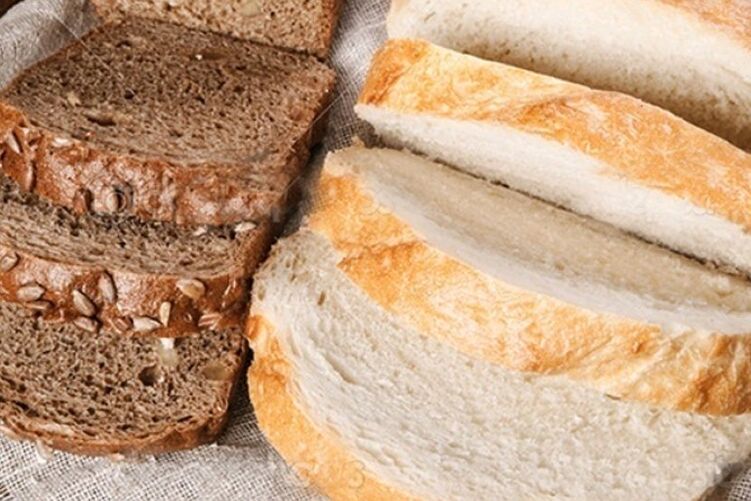
The diet includes plenty of liquid and semi-liquid foods, light salads, and vegetarian products. They not only help reduce the concentration of purine substances, but also reduce the burden on the gastrointestinal tract and kidneys.
Things you can't eat
The following foods are not acceptable in the diet:
- Sweet pastries.
- Fatty meat, young animal dishes (veal, chicken), canned meat and bacon, sausages, sausages, small sausages and other semi-finished products.
- By-products.
- Salted, canned, smoked or fried fatty fish, caviar.
- Peas, beans, lentils, soybeans and other legumes.
- mushroom.
- Sorrel, spinach, olives.
- Spicy and salty cheese.
- Decoctions and broths based on meat and offal, fish, and mushrooms.
- Cakes, pastries, butter bread.
- peanut.
- Animal fats: lard, lard. Margarine.
- Alcoholic beverages, strong tea, coffee, cocoa.
- Hot spices and sauces, including mustard, horseradish, mayonnaise, and ketchup.

Eating spicy, greasy, and fried foods can make gout symptoms worse.
Table 6 Gout
In medical institutions, Diet No. 6 is used to treat diseases. The medical menu takes into account factors such as the chemical composition of the food, the calorie content, the ratio of protein, fat and carbohydrates. This allows you to choose the best diet for your patients without having to make unnecessary calculations every time. Because of this, Table 6 is often used for home treatment of gout: it is universal and has no contraindications.
Diet during deterioration
If the symptoms of gout worsen, it is recommended to change the menu. Formulate dietary rules during the worsening period:
- Eliminate meat and fish completely from the diet;
- Frequent fasting days-up to 4 days a week;
- The basis of the diet is fresh fruits and vegetables;
- Be sure to drink more alkaline beverages such as alkaline mineral water;
- All food is supplied in liquid or semi-liquid form;
- Eat meals frequently (7-8 times a day), and have equal rest periods between meals.
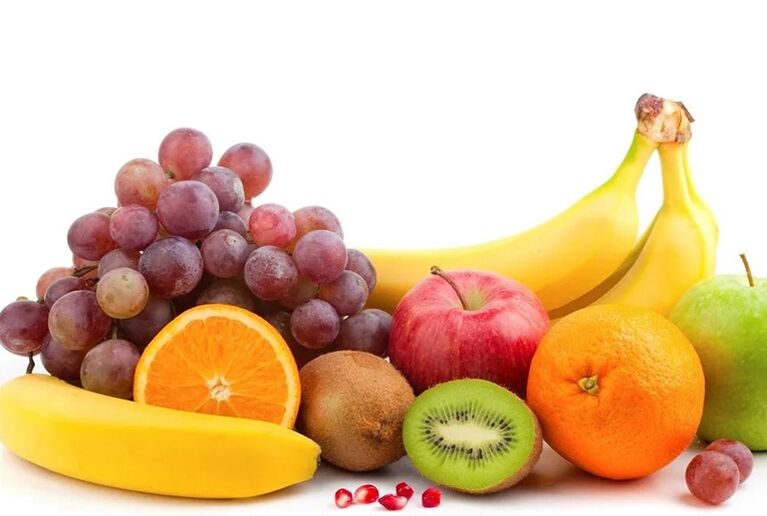
Stop eating and drinking after the pain and swelling in the leg has gone. Long-term maintenance is not recommended because the body will soon start to lack vitamins and nutrients.
7 day menu
Approximate weekly diet for gout treatment:
| eat | on Monday | Tuesday | Wednesday | Thursday | Friday | Saturday | Sunday |
|---|---|---|---|---|---|---|---|
| breakfast | Bran bread sandwich with jam, vegetable salad with sour cream sauce, rosehip soup | Pumpkin milk rice porridge, fresh orange | Oatmeal with butter and jam, homemade jelly with pulp, herbal tea | Buckwheat porridge with milk, grated apple and carrot salad | Oatmeal with grated apples, berry jam, tea | Milk millet porridge, hard-boiled eggs, roasted apples with nut filling | Vegetable salad with cheese and sesame seeds, potato pancakes with sour cream |
| Lunch | Greek yogurt, 2 biscuits | Fresh strawberries with cream | Corn flakes with skim milk, assorted nuts | Dried Fruit Curd Mousse | Corn flakes with yogurt and banana chips | Ice cream with fruit and berry mousse | Pancakes with jam and fruit slices |
| dinner | Vegetable soup with eggs and croutons, grated beetroot, carrot and apple salad, banana juice | Vegetable casserole with cheese, steamed chicken steak, berry jelly | Salmon vegetable soup, polenta, yogurt | Milk noodle soup, vegetable stew, carrot and apple fresh | Broccoli soup, mashed potatoes with sour cream, fresh orange | Cabbage soup, paella, panna cotta | Potato soup, vegetable stewed turkey meatballs, banana smoothie |
| dinner | Potato croquettes, sliced fresh vegetables, lemon herbal tea | Dorma with sour cream, cheese with fresh fruit slices, candied fruit | Potato casserole with vegetables and eggs, vegetable salad with linseed oil, lingonberry juice | Grated beets with garlic, oatmeal jelly, fruit salad | Potatoes boiled with herbs and oil, vegetable salad, dried fruit compote | Zucchini stuffed vegetables with cheese, sliced vegetable corn oil, fresh banana | Cucumber and tomato salad, broccoli slices with sour cream sauce, cheese cake, bran soup |
| Before going to bed | Yogurt with fresh berries | Biscuits with berry sauce, kefir | Rosehip soup, apple | Curd, pear | Milk Souffle with Fruit | Kefir, oranges | Cheese with sour cream and candied fruit |
The items in the menu are interchangeable and can be changed or supplemented according to taste. The most important thing is not to violate the basic principles of diet.
Characteristics of fasting days
The gout diet eliminates total hunger because it can cause the disease to worsen. On fasting days, it is recommended to stick to a single diet (watermelon, potatoes, cucumber, carrot) or prepare salads, slices, stews of different types of vegetables and fruits.
Small amounts of dairy products and grains are allowed. Rice’s fasting days are very popular: it is boiled in milk, then a small amount of grated apple is added and eaten in small portions.
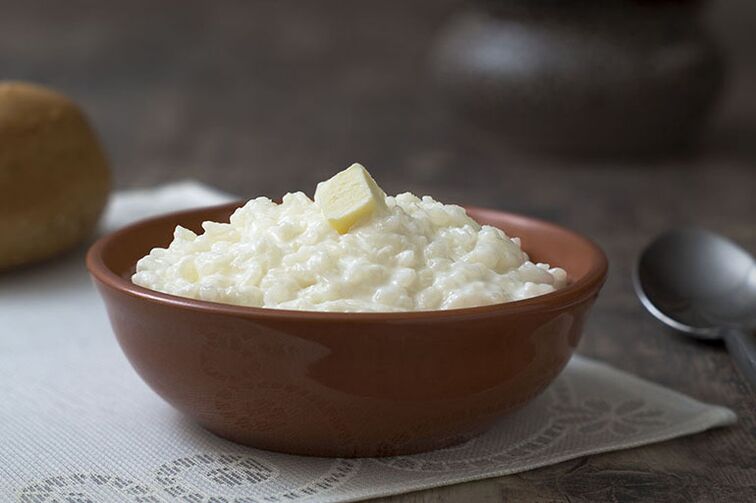
A fermented milk diet will help you quickly remove excess uric acid: this means that only cottage cheese (400 grams) and kefir (0. 5 liters) are used during the day.
Gout recipes
Therapeutic diet allows you to eat many familiar dishes: cereals, vegetable soups, stews, salads. They do not need expensive products or special cooking skills. In order for patients not to feel uncomfortable with boring, monotonous food, you can diversify the menu with original recipes that allow ingredients.
Light cream soup
Low-calorie, but delicious and satisfying lunch dishes. To prepare it, you will need the following products:
- 1 onion;
- 1 carrot;
- 1 bunch spinach leaves
- 1 slice white bread
- 2 teaspoons lemon juice;
- 2 teaspoons vegetable oil;
- 1 teaspoon cream;
- 0. 5 teaspoon Sahara.
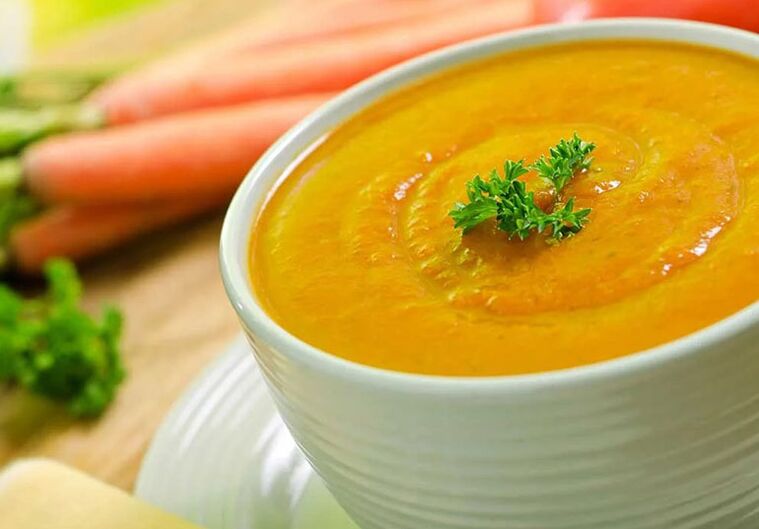
Cut the bread into small cubes and dry in a dry frying pan. Peel and chop onion and carrot. Pour the oil into a deep saucepan, heat, add vegetables, and simmer for 6-7 minutes. Use a blender to add spinach leaves and puree. Bring the mixture to a boil, add lemon juice and sugar. Remove from the heat source and place on a plate. Add a little cream and white bread toast to each part.
Cheese casserole
Use this dish as a dessert or snack. To prepare it, you will need:
- 140 grams cottage cheese;
- 70 g sour cream;
- 1 egg;
- 3 tablespoons. Lake coarse grains;
- 1 tbsp. Lake sahara
- 0. 5 teaspoon of soda water defoamed with lemon juice;
- Tasting of dried fruits and nuts;
- Salt.
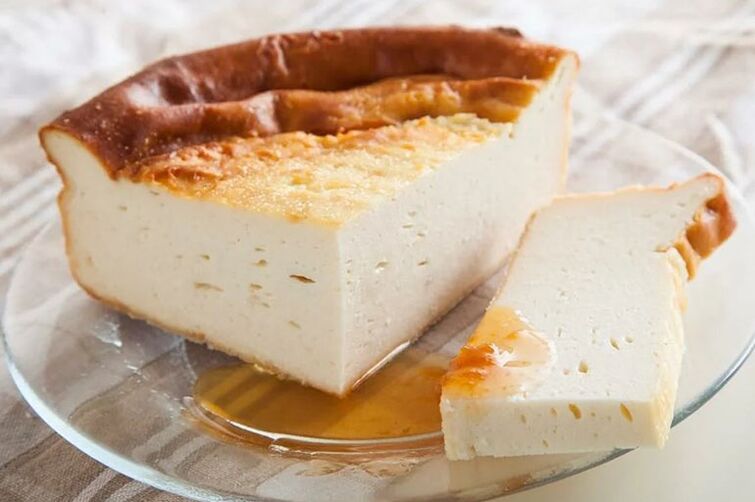
Mix the cheese with sour cream. Pour salt, sugar, and semolina into the resulting material. Add chopped dried fruits and nuts. Adjust to evenly mix with cooked soda. The substance in the baking tray must be placed in an oven preheated to 180°C and cooked until golden brown.
Steamed Chicken Meatballs with Gravy
A low-calorie main dish that can be eaten alone or with side dishes. When cooking, you need:
- 350 g chicken fillet;
- 2 onions;
- 1 carrot;
- 1 clove of garlic;
- 1 egg;
- 1 tbsp. Plain rice;
- 70 grams of white bread;
- 200 ml vegetable soup;
- 50 g sour cream;
- 2 tablespoons. Lake milk;
- 0. 5 tablespoons. Lake flour;
- Seasoning with green onions, parsley and dill;
- Vegetable oil used for frying;
- Salt.
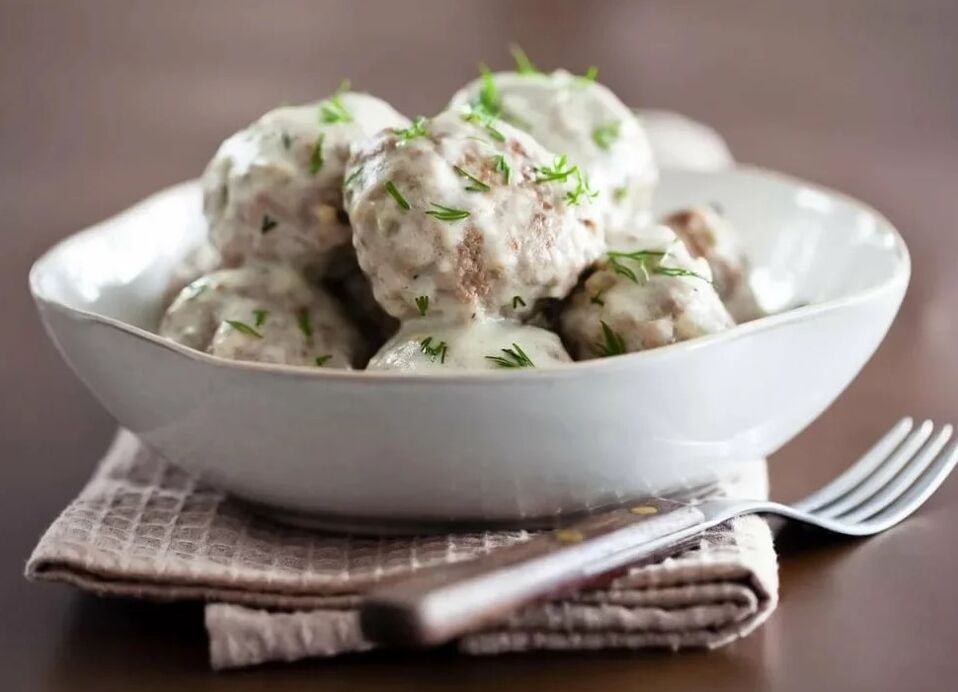
Soak the bread in milk. Don't put salt in cooking, let cool. Cut the chicken fillets into medium-sized pieces and put them in a blender. Add 1 chopped onion, garlic, bread and herbs, add a raw egg, and chop until smooth. After mixing with rice, you need to add salt and place in the refrigerator for 20 minutes. Then the meatballs are formed and steamed for 6-8 minutes.
Chop the remaining onions and carrots. Fry vegetables in oil for 2-3 minutes, pour in broth, add flour and sour cream. Heat the sauce on low heat until thick, add the meatballs and cook for 5-6 minutes. Sprinkle with herbs before serving.
Eggplant Minced Meat Casserole
A hearty second course, perfect for lunch or dinner. To prepare it, you need to prepare the following ingredients:
- 300 grams of minced meat;
- 2 large eggplants;
- 1 onion;
- 1 clove of garlic;
- 3 tablespoons. Lake tomato sauce;
- 2 tablespoons. Lake flour;
- 120 grams of hard cheese;
- 50 ml cream;
- Vegetable oil;
- Salt.
Cut the eggplant into long strips, season with salt, and get the juice. Dip in flour and fry on both sides in a frying pan until half cooked. Chop the garlic and onion and fry until golden brown. Add minced meat, simmer over medium heat for 3 minutes, then add tomato sauce. Pour 0. 5 tablespoon. Season with water and salt. Cover and cook for another 5 minutes.
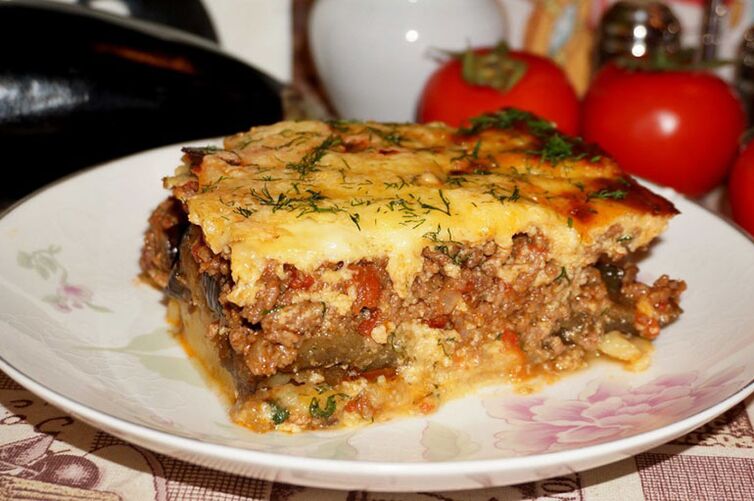
Place the eggplant slices in a greased baking dish, spread a thick layer with minced meat on top, and then grated or sliced cheese. Pour the cream and bake in an oven preheated to 180°C for half an hour.
Pumpkin Puree
The traditional first meal of the day. When cooking, you need to bring the following products:
- 0. 5 kg pumpkin, peeled, film and seeds;
- 2 tablespoons. Lake butter;
- 2 tablespoons. Lake rice;
- 1 tbsp. l sugar;
- 250 ml milk;
- Creamy
- Salt.
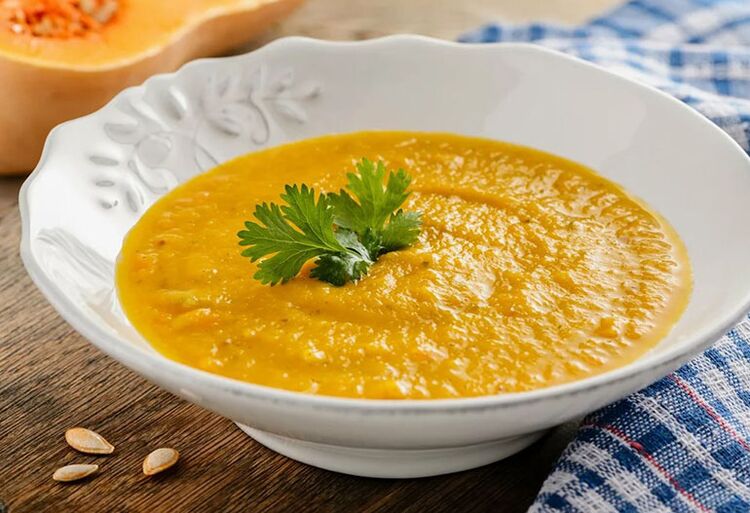
Cut the pumpkin into cubes, put it in a pan, add rice, salt and sugar. Pour 1 liter of water and cook until soft. Pour in the melted butter and sift it. Go back to the stove, add the milk, boil, then remove from the heat. Put the prepared pumpkin soup on a plate and season with cream.
Dietitian Comments
- "Adhering to the gout diet is essential for a patient’s complete life. The right diet can help relieve pain and swelling, and reduce the risk of complications. When compiling a menu, it’s worth paying attention to protein because their patients usually lack what they commonly use. The product. "
- "The gout diet can effectively reduce the level of uric acid in the body. It is recommended that patients observe it throughout their lives to prevent the deterioration of the disease and continue the asymptomatic course. "
- "This diet can reduce the level of uric acid in the body by about 15%. Combination with supportive medications can effectively treat gout. "
Disadvantages of Gout Diet
The main disadvantage of this diet is that the food restrictions are quite strict. Even minor violations can cause the disease to worsen. For lovers of meat and alcoholic beverages, this diet is particularly unpleasant.
Another disadvantage of the diet is the lack of animal protein, which must be made up for with expensive and unusual dairy products and plant products. In addition, this diet is not suitable for weight loss and is only used for treatment.





















